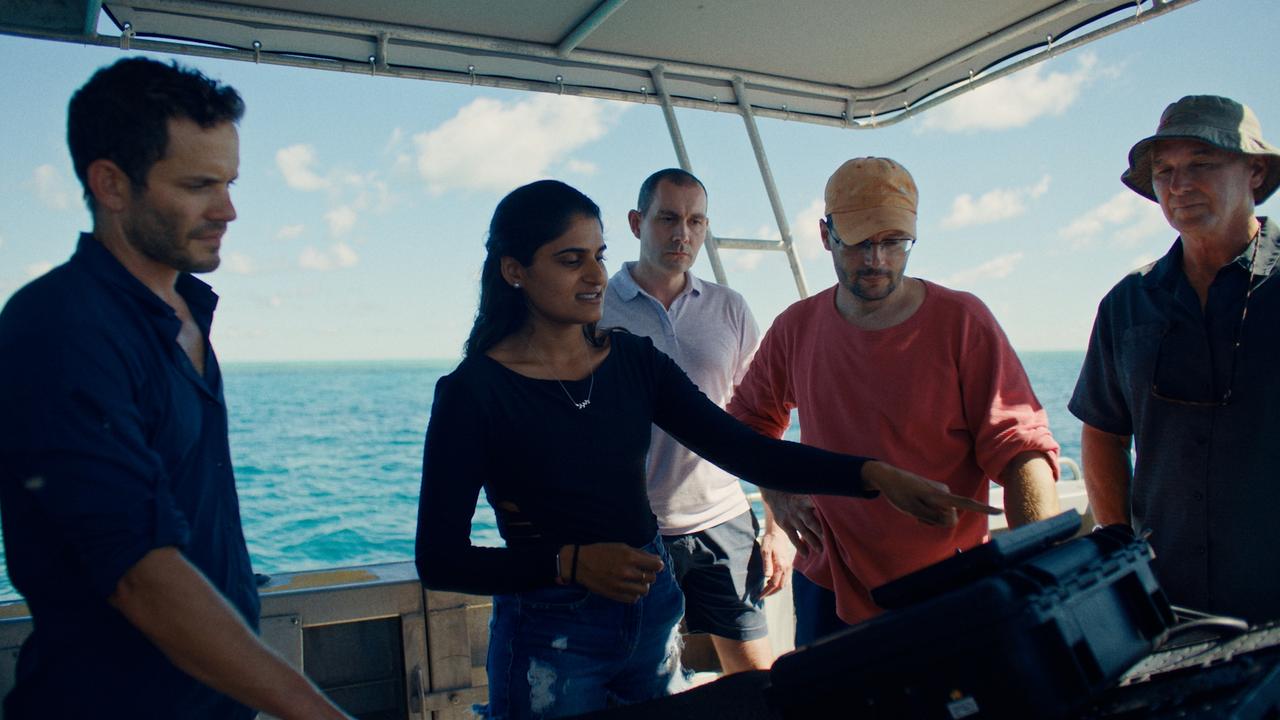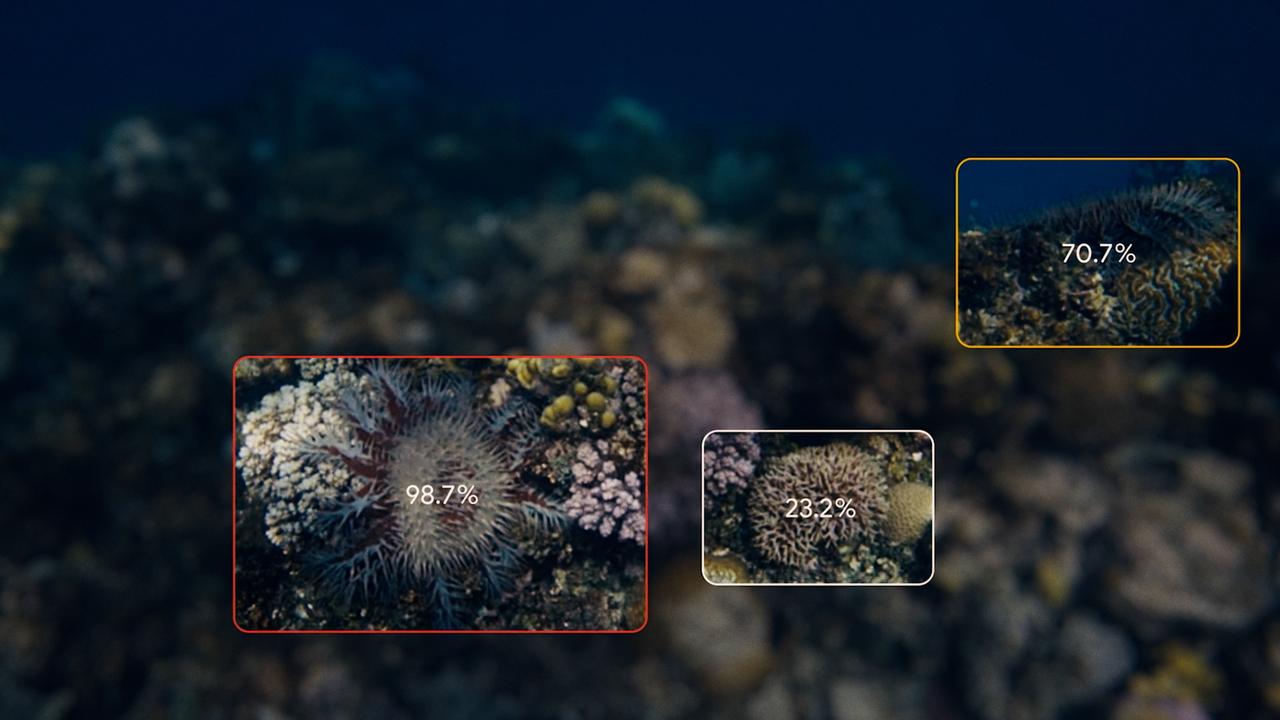Google CEO says Aussie project to save the Great Barrier Reef will be the ‘first of many’ CSIRO projects
Australia’s top science agency is teaming with Google to save the Great Barrier Reef in a project the CEO says is the first of many.

Artificial intelligence could help thwart one of the biggest threats to Australia’s Great Barrier Reef, potentially saving huge areas of coral from devastation by crown of thorns starfish.
Tech giant Google has teamed with scientists from the CSIRO to create AI software that could identify the dangerous pests on the Queensland reef, which are one of the natural wonder’s three biggest threats.
And the new approach, which uses footage from an underwater camera to identify starfish outbreaks, not only replaces an old, laborious method but early results show it could correctly identify more of the dangerous pests, preventing outbreaks.

Google CEO Sundar Pichai told News Corp he was “excited” about the company’s commitment to the Reef project and the potential for future scientific partnerships Down Under.
“We are investing in engineering talent in Australia and we are committed to doing that and will be doing more work around AI there,” he said.
“There are other ideas floating around so you will see us build on it. Our goal with our AI research teams is to strike partnerships with academic, institutions, and non-profits, and governmental institutions to show the benefits of what’s possible.”
CSIRO coral reef ecology expert Professor Russ Babcock said Google’s AI technology, developed over 18 months, could be trained to identify crown of thorns starfish more efficiently than the old “manta tow” method developed in the 1970s.
The system, which was used until recently, involves towing a diver behind a boat, suspended by a floating board, and stopping every two minutes to record how many starfish and coral they have identified.
“It’s low-tech and it relies on humans and assuming they can do all things perfectly at all times,” he said.
“You have to hold your breath, you have to concentrate on where you’re going and getting another breath as you’re supposed to be scanning the reef while going along at two knots and remembering how much coral is there.”

Prof Babcock said as well as reducing labour, the new software had the potential to correctly identify more of the reef pests, stopping damaging outbreaks before they occurred.
“We sent out a diver and they saw one starfish and when we looked at the images collected the program found 20,” he said.
Google Australia managing director Mel Silva said the starfish program was part of the company’s $1 billion Digital Future Initiative, announced in November 2021, and the company was also working with other Australian researchers at Murdoch University and QUT to track “endangered dugongs, turtles, dolphins and sharks in aerial images with AI”.
Prof Babcock said the AI software, which would be released for use on other reefs worldwide, was not the sole solution to threats affecting the Great Barrier Reef but one that could have an immediate impact.
“Instead of people saying ‘we won’t control starfish and it looks like the coral will come back anyway’ we need to do everything we can to save what we’ve got so it can maintain and propagate itself,” he said.
The CSIRO and Google partnership also comes after supermarket giant Coles committed to spending $10 million over 10 years to protect the Great Barrier Reef, and after a Great Barrier Reef Marine Park Authority report warned the area had experienced its fourth mass bleaching event in seven years.
More Coverage
Originally published as Google CEO says Aussie project to save the Great Barrier Reef will be the ‘first of many’ CSIRO projects




